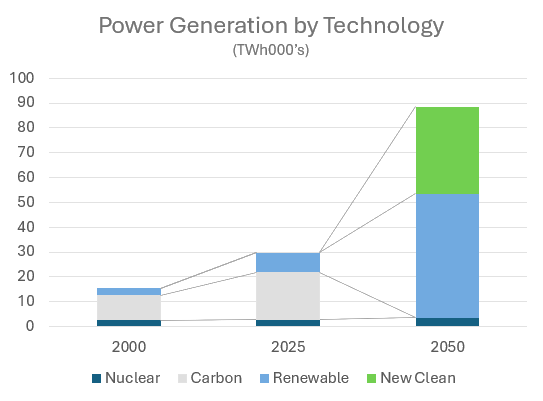Fusion – The Untapped Energy Source
Fusion energy has the power to change everything. A limitless, safe, and secure source of energy, fusion doesn’t just match the benefits of today’s renewables - it goes further.
As breakthroughs accelerate, governments and investors are waking up to what fusion really is: the world’s greatest untapped energy source.

The ‘Clean Energy Gap’
In 2024, the world used more renewable energy than ever before, and at the same time, more fossil fuels than ever before. Our appetite for energy is insatiable, driven by data centres, global travel, and the demands of modern life.
Fusion is the only energy source with the scale to satisfy that demand while breaking our reliance on hydrocarbons.
It is the cornerstone of tomorrow’s clean energy mix - an industry-defining technology that can power economies, protect our planet, and reshape society.
Scaling Inertial Fusion Energy (IFE)
There are two dominant approaches to fusion energy – inertial fusion (IFE) and magnetic confinement fusion (MCF). At First Light, we are developing a scalable source of IFE. We believe this is the quickest route to commercial fusion. Although a nascent technology compared to MCF, progress in inertial fusion in the last decade has been rapid.
The physics of IFE have already been proven. In December 2022, scientists at the Lawrence Livermore National Laboratory in the U.S. made history when they achieved energy ‘gain' in a controlled laboratory setting for the first time with inertial fusion technology. This means the fusion reaction produced more energy than it consumed – a key milestone on the path to commercial fusion.
We know the physics of inertial fusion work. The next step is to accelerate the scaling up of that process, so it becomes a commercially viable solution to the global clean energy gap.
First Light Fusion’s advanced target technology is integral to building affordable and efficient IFE power plants. We have developed an amplifier which lessens the requirements on other aspects of a fusion power plant, ultimately bringing down the final cost of the electricity generated.
Race to 2050
To change the world for the next generation, we need to deal with climate change and tackle the ever-present threat to energy security. Fusion is the key underpinning element to achieving those aims and plugging the clean energy gap.
If the world is to achieve net zero by 2050, it is vital that both public and private investment and support coalesce around fusion and its transformative potential with the urgency that the clean energy conundrum requires. The future is fusion, and the time to act is now.